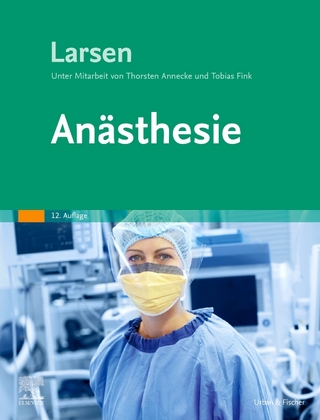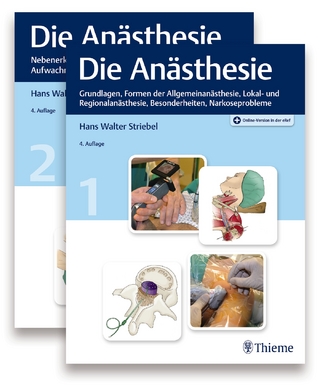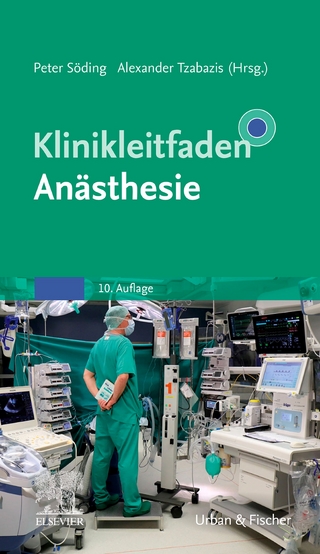
Acute Pain Management
Cambridge University Press (Verlag)
978-0-521-18787-9 (ISBN)
- Titel wird leider nicht erscheinen
- Artikel merken
This textbook is written as a comprehensive overview of acute pain management. It is designed to guide clinicians through an impressive array of different options available to them and to patients. There has been a flurry of interest in the extent to which acute pain can become chronic pain, and how we might reduce the incidence of such chronicity. This overview covers a wide range of treatments for pain management, including the anatomy of pain pathways, the pathophysiology of severe pain, pain assessment, therapeutic guidelines, analgesic options, organization of pain services, and the role of anesthesiologists, surgeons, pharmacists, and nurses in providing optimal care. It also discusses the use of patient-controlled analgesia and how this may or may not be effective and useful.
Part I. Pain Physiology and Pharmacology: 1. Pain pathways and acute pain processing; 2. The pathophysiology of acute pain; 3. Patient variables influencing acute pain management; 4. Acute pain: a psychosocial perspective; 5. Non-steroidal anti-inflammatory drugs and acetaminophen: pharmacology for the future; 6. Local anesthetics in regional anesthesia and acute pain management; 7. Pharmacology of novel non-NSAID analgesics (Ketamine, Clonidine, Gabapentin); 8. Pharmacokinetics of epidural opioids; 9. Transitions from acute to chronic pain; 10. Molecular basis and clinical implications of opioid tolerance and opioid-induced hyperalgesia; Part II. Clinical Analgesia: 11. Qualitative and quantitative assessment of pain; 12. The role of preventive analgesia and impact on patient outcome; 13. Opioid oral and parenteral opioid analgesics for acute pain management; 14. IV-PCA (history, technical aspects, agents, dosing, risk vs. benefits, effects on pain, satisfaction, effect on outcome); 15. Clinical application of epidural analgesia; 16. Neuraxial analgesia with hydromorphone morphine and fentanyl: dosing and safety guidelines; 17. Regional anesthesia for acute pain in the in-patient setting; 18. Regional anesthesia for acute pain management in the outpatient setting; 19. Patient controlled analgesia devices and analgesic infusion pumps; 20. Novel analgesic drug delivery systems for acute pain management; 21. Non-selective non-steroidal anti-inflammatory drugs (NSAIDs), cyclooxygenase-2 inhibitors (COX-2Is), and acetaminophen in acute perioperative pain; 22. Perioperative ketamine for better postoperative pain outcome; 23. Clinical application of glucocorticoids, anti-neuropathics and other analgesic adjuvants for acute pain management; 24. Non-pharmacological approaches for acute pain management; 25. Adverse events associated with opioid therapy and their treatment (incidence of adversity, nausea, vomiting respiratory depression, ileus, etc.); 26. Respiratory depression: incidence, diagnosis, and treatment; Part III. Acute Pain Management in Special Patient Populations: 27. Acute pain management services: organization and implementation issues; 28. Acute pain management in the community hospital setting; 29. Ambulatory surgical pain: economic aspects and optimal analgesic management; 30. Pediatric acute pain management (oral, parenteral, neuraxial); 31. Acute pain management for elderly 'high risk' and cognitively impaired patients: rationale for regional analgesia; 32. Post-cesarean analgesia; 33. Acute pain management in Sickle Cell Disease patients; 34. Acute pain management in patients with opioid dependency and substance abuse (including buprenorphine); Part IV. Specialist Managed Pain: 35. Pain management following colectomy: a surgeon's perspective (balancing analgesia vs. side effects); 36. Acute pain management in the emergency department (medical and trauma related pain); 37. The nurse's role in acute pain management; 38. The role of the pharmacist in acute pain management; Part V. Pain Management and Patient Outcomes: 39. Economics and costs: a primer for acute pain management specialists; 40. Evidence based medicine (does optimal analgesia improve outcome/satisfaction in post-surgical settings); 41. Effect of epidural analgesia on postoperative outcomes; 42. Research in acute pain management; 43. Quality improvement approaches in acute pain management; 44. The future of acute pain management (where we are heading?).
| Erscheint lt. Verlag | 30.12.2010 |
|---|---|
| Vorwort | Henry McQuay |
| Verlagsort | Cambridge |
| Sprache | englisch |
| Themenwelt | Medizin / Pharmazie ► Medizinische Fachgebiete ► Anästhesie |
| Medizin / Pharmazie ► Medizinische Fachgebiete ► Schmerztherapie | |
| ISBN-10 | 0-521-18787-7 / 0521187877 |
| ISBN-13 | 978-0-521-18787-9 / 9780521187879 |
| Zustand | Neuware |
| Haben Sie eine Frage zum Produkt? |
aus dem Bereich


